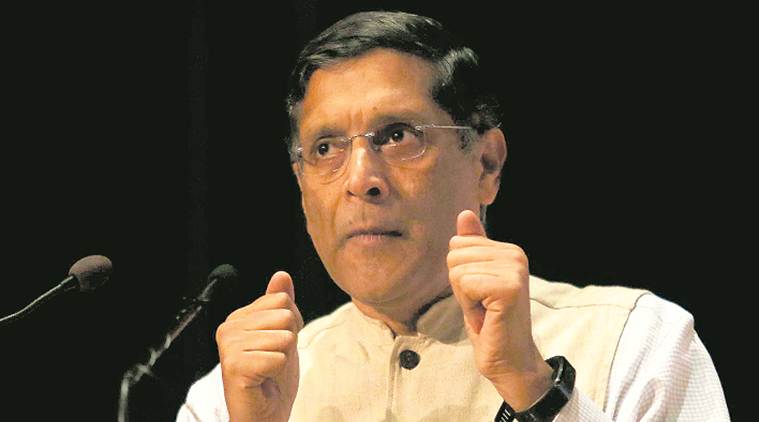Centre defends methodology after former CEA Arvind Subramanian says GDP growth figures ‘overstated’
Arvind Subramanian, in an article published by The Indian Express, said his research found that the actual annual growth rate may have been about 4.5 per cent, below the official estimates of 7 per cent.
 Arvind Subramanian, in an article published by The Indian Express, said his research found that the actual annual growth rate may have been about 4.5 per cent, below the official estimates of 7 per cent. (file photo)
Arvind Subramanian, in an article published by The Indian Express, said his research found that the actual annual growth rate may have been about 4.5 per cent, below the official estimates of 7 per cent. (file photo)
The Gross Domestic Product (GDP) growth estimates are based on accepted “procedures, methodologies, and available data”, the Centre said on Tuesday after former Chief Economic Advisor Arvind Subramanian, in an article published by The Indian Express, said the projections between 2011-12 and 2016-17 were “overstated by 2.5 percentage points per year”.
Subramanian said his research, published by Harvard University, found that the actual annual GDP growth rate may have been about 4.5 per cent, below the official estimates of 7 per cent.
The Ministry of Statistics and Programme Implementation (MoSPI), however, disagreed with the findings saying Subramanian’s overestimation of India’s GDP growth is primarily based on an analysis of indicators, like electricity consumption, two-wheeler sales, commercial vehicle sales using an econometric model and associated assumptions.
“The estimation of GDP in any economy is a complex exercise where several measures and metrics are evolved to better measure the performance of the economy,” the MoSPI said in a statement.
With any base revision for GDP estimation, as new and more regular data sources become available, it is important to note that “a comparison” of the old and new series are not amenable to simplistic macro-econometric modelling, it said.
“The GDP estimates released by the Ministry are based on accepted procedures, methodologies and available data and objectively measure the contribution of various sectors in the economy,” it added.
The ministry stressed that with structural changes taking place in the economy, it is necessary to revise the base year of macroeconomic indicators like GDP, Index of Industrial Production (IIP), Consumer Price Index (CPI), periodically to ensure that indicators remain relevant and reflect the structural changes more realistically.
Such revisions not only use the latest data from censuses and surveys, but they also incorporate information from administrative data that have become more robust over time, it said.
In India, the Base Year of the GDP Series was revised from 2004-05 to 2011-12 and released on January 30, 2015, after adaptation of the sources and methods in line with the System of National Accounts 2008 (2008 SNA).
with PTI inputs



- 01
- 02
- 03
- 04
- 05




























